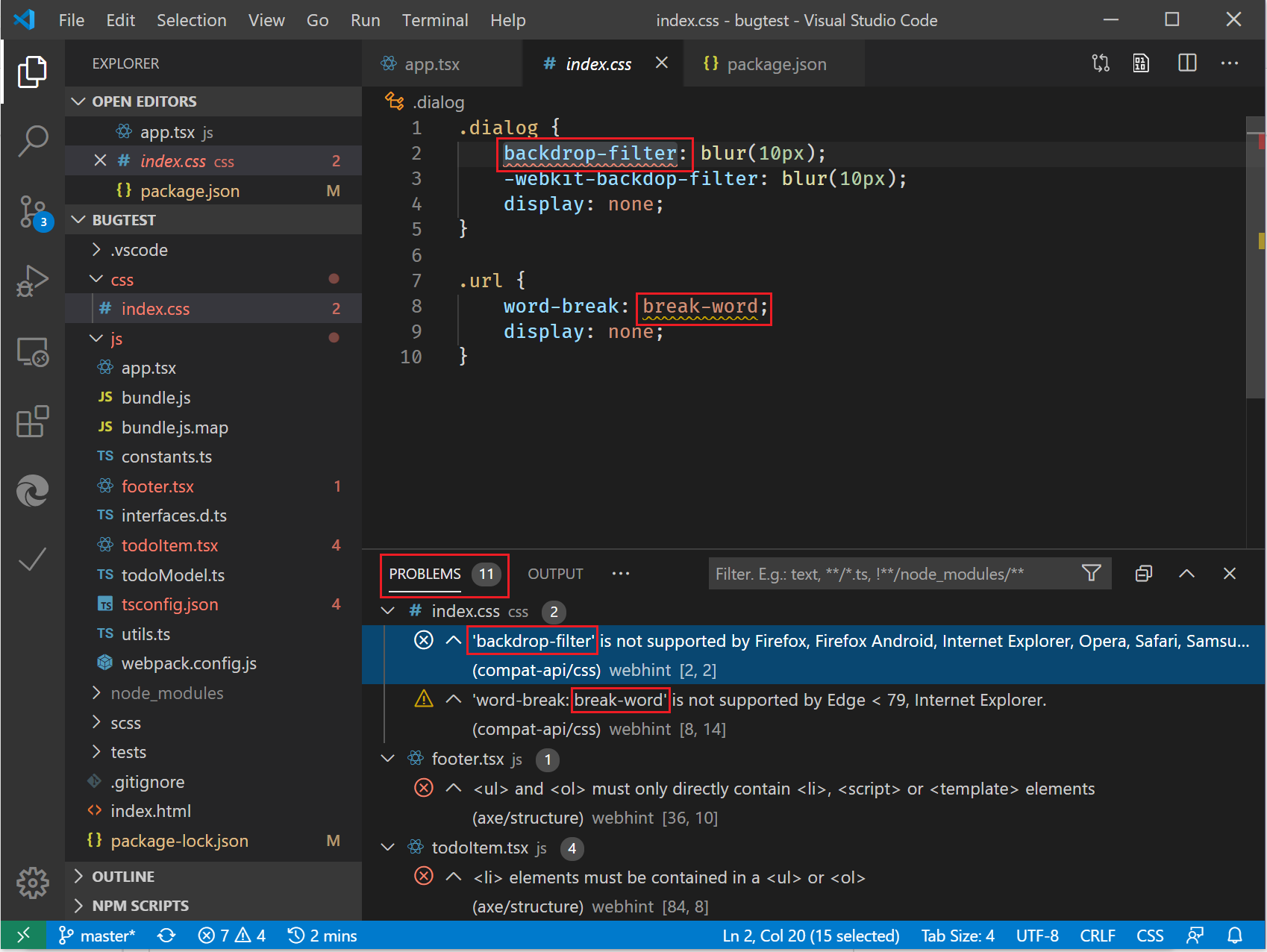
- #Node js visual studio code extension how to#
- #Node js visual studio code extension install#
- #Node js visual studio code extension generator#
- #Node js visual studio code extension code#
bin/application running.įrom a terminal in the Express application folder, run: npm start The generated Express application has a package.json file which includes a start script to run node.
#Node js visual studio code extension install#
To install all of the application's dependencies (again shipped as NPM modules), go to the new folder and execute npm install: cd myExpressAppĪt this point, we should test that our application runs. This creates a new folder called myExpressApp with the contents of your application. We can now scaffold a new Express application called myExpressApp by running: express myExpressApp
#Node js visual studio code extension generator#
The -g switch installs the Express Generator globally on your machine so you can run it from anywhere. Install the Express Generator by running the following from a terminal: npm install -g express-generator Tip: To test that you've got npm correctly installed on your computer, type npm -help from a terminal and you should see the usage documentation. The Express Generator is shipped as an NPM module and installed by using the NPM command line tool npm. You can scaffold (create) a new Express application using the Express Generator tool. ExpressĮxpress is a very popular application framework for building and running Node.js applications.
#Node js visual studio code extension code#
Now that you've seen VS Code in action with "Hello World", the next section shows using VS Code with a full-stack Node.js web app. Notice that VS Code displays an orange Status Bar to indicate it is in Debug mode and the DEBUG CONSOLE is displayed. Your breakpoint will be hit and you can view and step through the simple application. With the default Node.js Launch configuration created, you can now click Debug tool bar green arrow or press kb() to launch and debug "Hello World". The new launch.json file is created in a VS Code specific.
#Node js visual studio code extension how to#
This configuration file lets you specify how to start the application, what arguments to pass in, the working directory, and more.


Select the Debug View in the Side Bar:Ĭlick on the Configure gear icon at the top of the Debug view to create a default launch.json configuration file and select Node.js as the Debug Environment. We now need to configure the debugger for this simple workspace.

To set a breakpoint in app.js, put the editor cursor on the first line and press kb() or simply click in the editor left gutter next to the line numbers. Let's try debugging our simple application. Debugging Hello WorldĪs mentioned in the introduction, VS Code comes with a Node.js debugger installed. You should see "Hello World" output to the terminal and then Node.js returns. you'll see IntelliSense showing all of the string functions available on msg.Īfter experimenting with IntelliSense, revert any extra changes from the source code example above and save the file ( kb()). When editing JavaScript files, VS Code will automatically provide you with IntelliSense for the DOM.Īlso notice that VS Code knows that msg is a string based on the initialization to 'hello world'. IntelliSense on the console object was automatically presented to you. js file extension, VS Code interprets this file as JavaScript and will evaluate the contents with the JavaScript language service.Ĭreate a simple string variable in app.js and send the contents of the string to the console: var msg = 'hello world' The period '.' refers to the current folder, therefore VS Code will start and open the Hello folder.įrom the File Explorer tool bar, press the New File button:īy using the. Tip: You can open files or folders directly from the command line.

Let's get started by creating the simplest Node.js application, "Hello World".Ĭreate an empty folder called "Hello", navigate into and open VS Code: mkdir Hello Tip: To test that you've got Node.js correctly installed on your computer, type node -help from a terminal and you should see the usage documentation. See Installing Node.js via package manager to find the Node.js package and installation instructions tailored to your version of Linux. Linux: There are specific Node.js packages available for the various flavors of Linux. You'll need to open a new terminal (command prompt) for the node and npm command line tools to be on your PATH. The Node Package Manager is included in the Node.js distribution. To get started in this walkthrough, install Node.js for your platform. However, to run a Node.js application, you will need to install the Node.js runtime on your machine. VS Code has support for the JavaScript and TypeScript languages out-of-the-box as well as Node.js debugging. Node.js is the runtime and NPM is the Package Manager for Node.js modules. Node.js is a platform for building fast and scalable server applications using JavaScript. Adding a jsconfig.json Configuration File.


 0 kommentar(er)
0 kommentar(er)
